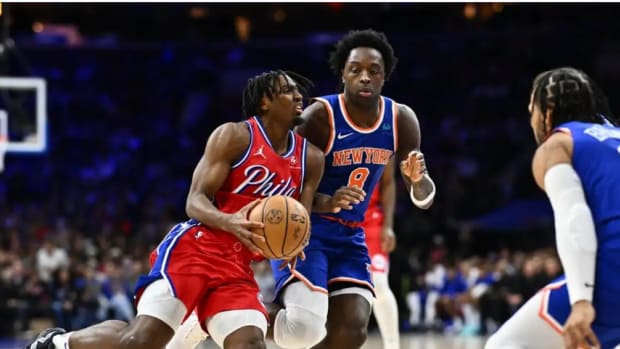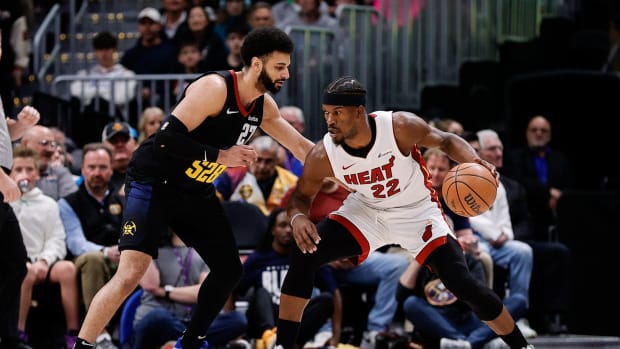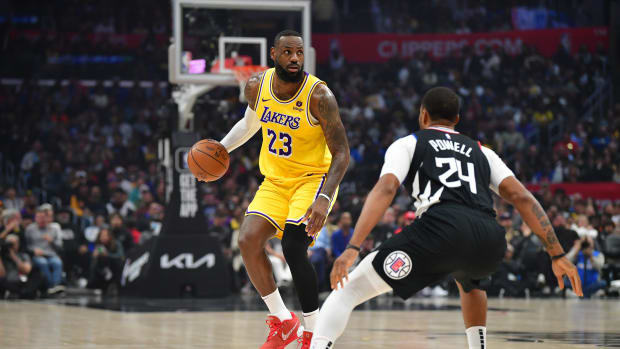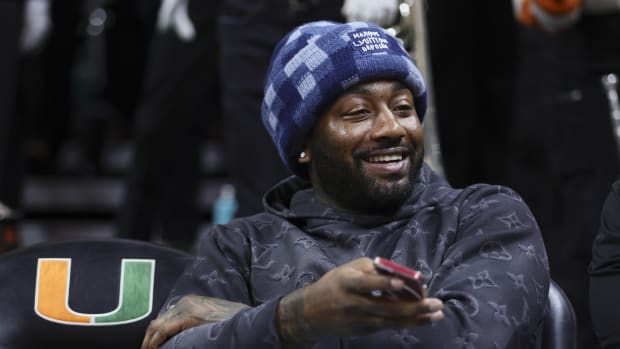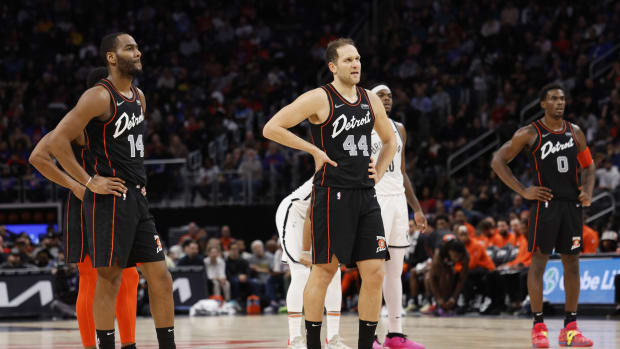Inside One of the Most Bizarre Trades in NBA History
Come Thursday afternoon, the 34–15 Miami Heat might make a trade in preparation for a playoff push. Presumably a possible deal that Miami makes—or any other team in the league for that matter—will involve a combination of players, picks and cash. Despite a recent offseason uptick in head coaches being traded, as well as floating rumors about Masai Ujiri and the New York Knicks, it’s pretty much guaranteed that no deal will be as unusual as a 1983 transaction that sent Erik Spoelstra’s father, Jon Spoelstra, then vice president of marketing for the Portland Trail Blazers, to the Indiana Pacers in exchange for six-time first team all-defense (ABA and NBA) point guard Don Buse.
No other players involved. Just “Don Buse for cash and other considerations.”
“I was the other consideration,” Spoelstra tells Sports Illustrated, remembering the deal.
“And I think [the cash] was used as a smokescreen.”
The conception of what might be the strangest trade in NBA history is reflective of a previous era. Spoelstra says that the Trail Blazers were the first team to bring radio in-house for profit, a move that paid immediate financial dividends. The former Blazers executive says that at one time Portland made more money off their radio broadcast than the rest of the league combined.
In the early 1980s, the Trail Blazers were one of the league’s most popular and successful franchises. During Jack Ramsay’s 10-year stint as head coach, it missed the postseason only once—the year before the Spoelstra-Buse trade. Fans flocked to the Portland Memorial Coliseum as the Blazers went multiple years with consecutive season-ticket sellouts. A 1980 Los Angeles Times article notes that supporters even gathered at a downtown theatre to watch games, being “the only team in the NBA, probably the only sports team in the world,” to pipe regular-season home games to a closed-circuit location. As the Boston Globe’s Dan Shaughnessy wrote in March 1982, “In Portland, where the Trail Blazers are just about the only show in town, NBA games draw like Bruce Springsteen concerts.”
While the Blazers could attract attention like the Boss of the NBA, the Pacers were seemingly in the exact opposite predicament. Indiana would make only one postseason appearance throughout its first five seasons after joining the NBA. In 1981, majority owner Sam Nassi, a Los Angeles businessman, said he was selling the team, citing financial losses and lack of local support. “If the town is committed not to support the Pacers, I don’t know what it takes,” he said in June of that year.
There was talk of the team moving to Anaheim or perhaps Sacramento. And by 1983, Nassi even issued an ultimatum, saying the team would be sold by the end of the season or it would not operate next year and instead return to the league’s control.
The Pacers were in need of a spark to help them stay afloat, someone to tell prospective buyers that owning an NBA team was not necessarily a money-losing proposition. They needed Jon Spoelstra’s assistance.
In the middle of the 1982–83 season, Pacers general manager Bob Salyers first asked Spoelstra if he could come out to Indianapolis and consult for the team, “show them how they could do it,” Spoelstra recalls. He was open to helping the Pacers, but he also wanted to get a DEC desktop computer, and Indiana was willing to make that happen.
Spoelstra took the request to Larry Weinberg, the owner of the Blazers, to which Weinberg responded, “I’d like to help out our partners, but absolutely not.” The Blazers’ VP of marketing informed Salyers of the news.
But in a Jan. 4 game, against Indiana, of all teams, Portland’s starting point guard, Darnell Valentine, fractured a bone in his left foot. And with the Blazers looking to rebound from a postseason absence one year earlier, the team was in need of reinforcements.
Shortly thereafter, Salyers called up Portland’s general manager, Stu Inman, with a proposal. He offered Buse, Indiana’s starting point guard in 1981–82, who was a two-time All-Star guard (ABA and NBA) and one of the league’s best defensive guards in exchange for two weeks of Spoelstra’s time. “Inman thought it was a practical joke,” Spoelstra says. “So he hung up.” But Inman would forward the message to team president Harry Glickman, who relayed the proposal back to Weinberg, the Blazers’ owner.
“Larry said do it,” Spoelstra recalls. “Cause you get a starting point guard in Don Buse for two weeks of my time.”
Initially, the NBA kept the details of the deal quiet, omitting Spoelstra’s name from the announcement. But he went off to Indiana anyway, working just a single week with the team. He met with prospective owners and helped Indiana learn more about Portland’s in-house radio success. A 1986 New York Times story also reports that he turned in an 100-page document of suggestions that Spoelstra said at the time “he would have been afraid to try in Portland,” but he has no recollection of that document.
After one productive week in Indiana—“I enjoyed the visit,” Spoelstra says—he returned to Portland and picked up the DEC desktop computer he wanted, accepting the gift from Pacers management. Even further than that, Buse helped Portland return to the postseason and Indiana got sold just months later to Mel and Herb Simon—the team’s current owner—and a set of brothers that Spoelstra met during his brief visit.
A lot has changed about the NBA in the decades since a marketing expert was traded for a starting point guard. The deal would almost certainly not be possible today for salary cap balancing purposes. But when the longtime NBA executive is asked about if Miami team president Pat Riley might consider temporarily trading himself for a player that could help his son’s team make a playoff push? His answer reflects the Heat’s championship culture.
“You get a player for free,” Spoelstra says. “Yeah, he would.”






























